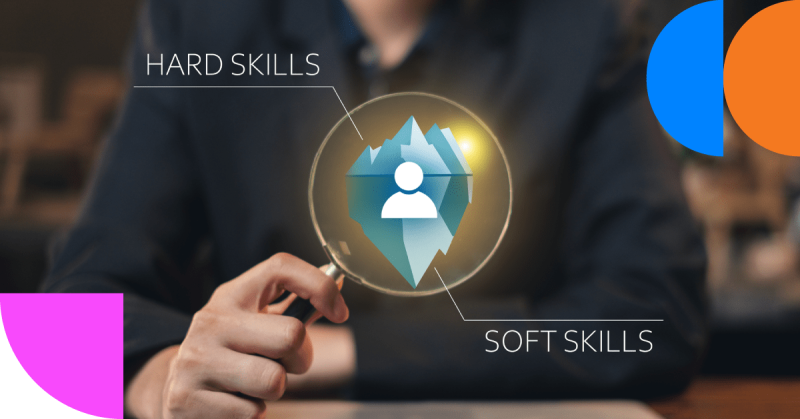However, over time you’ll notice that the nature and character of your staff change. This changing face of your workforce means that your training and development plan will need to change, too. We’ve had the Baby Boomers and Generation X; right now, we’re seeing the next socioeconomic group making their presence felt in the corporate world: The millennials.
Now, you may have heard of this group, but who, or what, are they, exactly? How are they different, and what challenges do they pose in the way your organization provides Learning and Development? What training techniques and approaches will work best?
The Millennial Generation covers those people born between roughly 1980 and 2000. According to research by Millennial Marketing, they comprise 25% of the population in the US and have considerable independence and spending power.
Looking at millennials’ characteristics, they are much more likely to be creative and share their creations via social media platforms, have significant outreach on the same, and are enthusiastic early adopters of new technology.
They also tend to be more enthusiastic (and more frequent) travelers. And it’s these characteristics you can take advantage of when it comes to training millennials.
Millennials in the workplace
The typical millennial attitude towards technology is key to developing a training program suited to their needs and expectations. They have grown up with computers, the internet, and tech all their lives, and are entirely at their ease with it, unlike people of previous generations. They are what are sometimes termed Digital Natives, or people who are at home in the realm of a life spent online.
As such, you’ll notice that in the workplace, millennials are far happier with receiving online training via your Learning and Talent Development Platform – after all, they’re accustomed to learning like this for almost all their lives. Where previous generations may prove resistant to innovative learning trends, millennials will embrace them.
Not only that, they are also great ambassadors for new ways of training, being able to communicate what they have learned (and how) to their teams with passion and clarity. So, when creating your materials for training millennials, bear this in mind: They are great at passing on your learning objectives, so consider using them as part of your training toolkit.
How to Train Your Millennial!
They’re happy being in the digital world, but what techniques work best when delivering corporate training for millennials?
The key is to have generational training and development: Changing times require changing approaches, and what may have worked in the past isn’t guaranteed to be successful now.
Here are a few ideas to consider for training millennials:
Microlearning
Microlearning — learning in very small, highly specific bursts — has become big business in eLearning circles. Millennials may be keen to learn, but their attention span is limited by the demands placed on them by a world screaming for their attention. In fact, it is estimated that the typical millennial’s attention span is as short as 90 seconds.
So your training materials must have an immediate ‘hook’ to get your trainees immersed and engaged. Have a single, specific learning objective for each learning task, and ensure that it can be completed within a short time.
Now, you might think this reduces your learning and development program to absurd levels of simplicity, but in fact, it’s enormously beneficial. You get to really accurately identify very precise training needs in your organization by thinking carefully about those single learning objectives.
Your trainees get to complete highly specific, concrete objectives over which they have more control and that will leave them empowered and engaged, and the whole attainment and achievement process becomes easier to track and record.
Virtual Reality and AI
Virtual reality has been with us for a while now, but recent advances, such as the development of a new generation of headsets, mean that it has really come into its own as a corporate training tool.
Learning can become a fully immersive experience through the use of VR headsets, allowing users to move through scenarios and places as if they were doing it in real life. As a generation weaned on computer gaming, millennials respond very well to virtual environments. And as computing power has increased and the programming has improved, increasingly we see Artificial Intelligence being used to enhance the VR experience.
Now, individual trainees can be in an environment where AI-enhanced avatars can respond, or where the program itself can respond to the actions and decisions made, in order to create an ongoing and highly realistic scenario.
Mention should also be made to another emerging trend – wearables technology. You’ve seen smart watches, of course, but increasingly we’ll be wearing all sorts of items that connect seamlessly with our smartphones, tablets, and PCs.
And again, it will be millennials leading the charge in adopting these new technologies. So, it makes sense to exploit these innovations for your training purposes. A simple example would be wearable cameras that record real-life scenarios that can then be exploited as a learning resource, as well as the VR headsets mentioned above.
Gamification
Another way to engage millennials in your Learning and Development platform is through gamification. As the name suggests, it’s the way to turn the training experience into a game, with points, badges, and rewards for completing various tasks or training levels.
This is enormously popular in schools and colleges, and it works equally well in the corporate world too, especially if it’s combined with real-life incentives. Gamification works so well because there’s always another challenge to complete, and it leaves the user hooked on getting to the next prize or level.
Experiential Training
As fun and engaging as the online world can be, there are times when it’s good to get your learning and development in the real one. Experiential training has been used for corporate learning and development for some time, but it’s even better suited to training millennials in the workplace because it provides a different, real world and engaging challenge to the way in which they’re used to learning.
Learning experientially reflects the ways that we as adults learn, and it takes place in a simulated, safe environment: For example, experiential training for financial traders may take place on a simulated trading floor, and allow participants to take one or many different roles in order to understand their own position in relation to their colleagues more deeply.
Many experiential training exercises involve solving a given issue in role-playing scenarios (for example, rescuing someone from a dangerous situation), then encouraging participants to record, reflect and apply what they have learned to their own specific situation.
Informal Training
One useful technique for managing millennials’ training is to hand back autonomy and responsibility for their learning to them. After all, they may be used to having on-demand learning resources from your Learning and Development platform, so let them have the freedom to explore the topics that concern their careers.
It’s never been easier to find out further and deeper information on any given subject thanks to the Internet, so make sure to use it. Autonomy, whether in the workplace or in learning, is a great way to boost enthusiasm and engagement, but it does need a bit of guidance too. During performance reviews, help them identify goals and subjects they’d like to look into further and leave them to get on with it!
Conclusion
One of the joys of being a trainer is that you get to learn new things, too. In this case, it’s about learning to manage the training expectations of millennials in the workplace. New generations bring new challenges, and that’s a good thing. Try shaking up your training methods and techniques, and see how it benefits your organization and your workforce!


